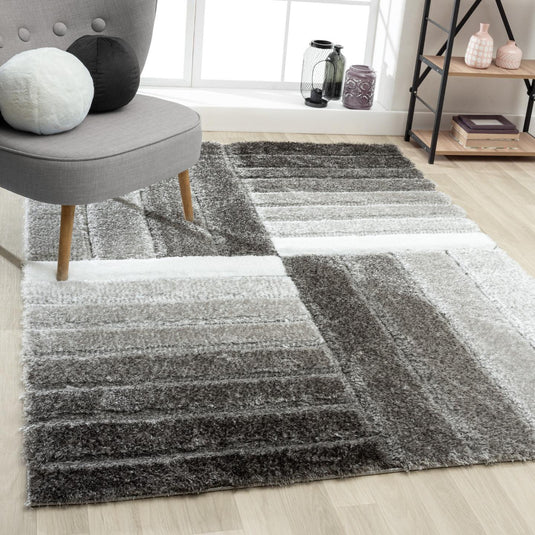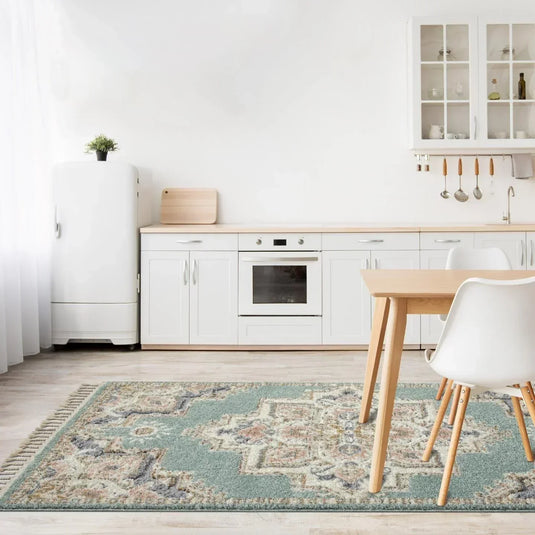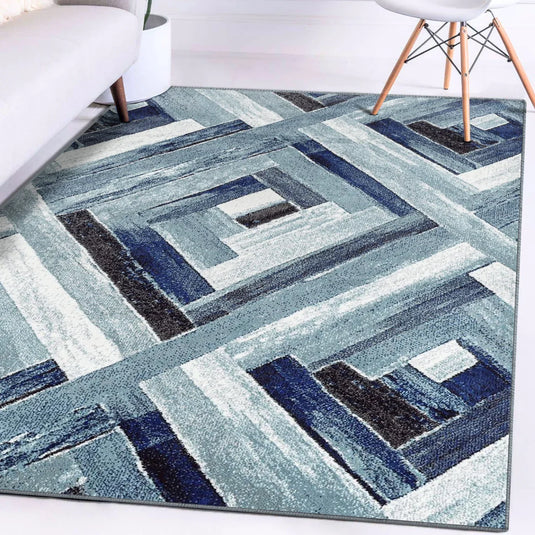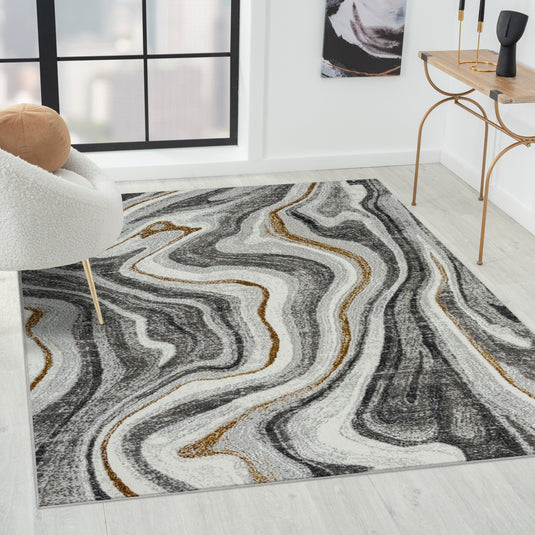How an Area Rug looks and feels depends solely on the materials used in producing it. It is one of the many reasons why choosing an ideal Area Rug for your space may be challenging.
Whether you want a simple piece to add sophistication to your bedroom or living room, or you’re looking for something more dependable to manage the stains caused by your kids, pets, or minimize specks of dirt caused by heavy foot traffic piling into your entryway or kitchen, rugs can work for any space, as long as you use the correct material.
On the one side, polypropylene rugs are suitable for indoor or outdoor spaces. And on the other side, Wool rugs are comfortable, natural, and sustainable fibers that suit many places around your home.

What Are Wool Rugs?
Wool rugs are handwoven, made from natural fibers but retain a synthetic look. They offer superb resilience to wear and tear and general soiling. They are made from shedding sheepskin, making them 100 percent natural.
What Are Polypropylene Rugs?
Polypropylene rugs, also known as olefin, are purely synthetic. They are designed to look like sisal and are actually made from synthetic fibers. Polypropylene, the main ingredient in the rug, is simply a polymer created from monomer propylene and is frequently used in packaging, labels, textiles, and reusable containers. These polypropylene fibers are specifically made to look precisely like wool, sisal, and other common rug fibers.
Due to the synthetic nature of polypropylene rugs, they are not as durable as wool rugs. While polypropylene rugs can last for 3-5 years, Wool rugs can last for many more years without showing any signs of wear.
They remain pristine for 50 years and can be passed from generation to generation.
Still, both wool and polypropylene have their pros and cons. Let's take a look at their characteristics.
Why Wool Rugs Are Suitable for Your Home

Durability
Wool rugs are durable and have superior wear. They last longer than any other type of rug. The durability of wool area rugs makes them a practical choice for common areas and rooms where you spend most of your time. Wool is very resilient, and that explains its durability. Its texture also allows it to quickly recover from crushing or indenting caused by footsteps or furniture. This natural resilience also keeps the rug looking new and fresh for more extended periods, retaining its original appearance.
Wool rugs are equally flexible. Their fibers can be stretched more than 35 percent and still quickly return to their natural shapes.
Soil Resistance
Wool has a natural ability to resist staining and soiling. It has more than 30 percent stain resistance quality than any other fibers. The fibers have microscopic scales that prevent dirt from staying within the rug. Wool is able to resist stains because of the natural light lanolin that coats its surface.
Flame Resistance
Wool rugs are naturally retardant. They'd rather char than burn. It is quite difficult for a flame to ignite in a wool rug due to its higher ignition temperature. Wool is also self-extinguishing in flames and will burn slowly in case a fire does progress.
Water Resistance
Wool rugs are highly absorbent, as said earlier. It can absorb one over three of its weight in moisture and still not feel damp. When the air is humid, a wool rug will absorb the excess moisture in the air, and consequently, when the air is drier, the fibers will release the moisture. That helps to keep the home's moisture levels in balance. For exceptionally damp areas, such as bathrooms or damp basements, a wool rug may not be suitable, as it would rarely have the room to dry out. This then causes problems associated with moisture retention, including mildew and mold.
Warmth
Wool absorbs moisture when the atmosphere is damp and releases it when the atmosphere is dry, creating a more comfortable, warmer environment. Wool rugs provide an added insulation against heat and flames for the underlay and underlying floor surface.
Environmental friendly
Wool rugs are the best renewable fiber. They are biodegradable. When you are tired or bored of them and decide to discard them, their pile will turn into nutrients as they decompose. In a way, this promotes further grass growth in your house, and the natural production cycle starts all over again. In addition, wool rugs can be recycled at the end of their useful life. They can be reformed and reused as decorative area rugs, and they can also be cut into strips and used to protect newly planted trees and prevent erosion and soil loss.
Wool Rug Holds Color Beautifully
Wool rug's authentic quality enables extensive design, color, pattern, and flexibility. The natural fiber used in making it ensures that color is drawn and locked into the fiber. Since it is locked into the wool rug, it can't fade away quickly from walking or furniture movement. It retains its good looks longer. Also, wool rugs naturally absorb dyes and don't shrug off. They can only fade when you consistently dry them under the sun.
Why Wool Rugs may not Be Suitable for Your Home

High Maintenance
Wool is very absorbent, so it can be challenging to remove stains once the fiber has absorbed them. As with all fibers, the best method of preventing a stain when a spill happens is to treat the spill as quickly as possible. If the substance is allowed to soak into the fiber, it may not come out anymore. This makes wool rugs rather difficult to maintain. And as a natural fiber, wool carries a slight risk of shrinking under improper maintenance. So, it must be treated correctly.
Again, wool rugs shed. Since it is a natural staple fiber, it is prone to shedding.
Cost of wool rugs
Wool rugs are mostly expensive compared to polypropylene rugs because of the natural fibers used in manufacturing them. Still, they can be economical since they are durable enough to last a lifetime. That means you eventually get to spend less as you can buy a wool rug at just one purchase and never have to purchase anyone ever again.
Why Polypropylene Rugs Are Suitable for Your Home
Stain Resistant
Polypropylene rugs are stain-resistant and will not fade even when exposed to outdoor elements. That makes them very suitable for outdoor spaces and indoor areas with high moisture or frequent spills. Polypropylene rugs do not absorb liquid.
However, they are not soil resistant as they are attracted to oil. Hence, oil-based stains will not go off quickly on them.
Easy to clean
Polypropylene rugs are relatively low maintenance. The synthetic fibers used in manufacturing them make it easy to clean off stains. You can clean off any tough stain with a bleach solution because of its non-absorbent surface.
Comfort
Polypropylene rugs are designed to be soft and offer the right amount of comfort needed. They have the same look and feel as natural fibers and provide great functionality. These make them versatile rugs that can find a home indoors and outdoors.
Water-Resistant
The materials used to manufacture polypropylene rugs are synthetic, which makes them waterproof. They can absorb water, withstand mildew, and resist water damage.
Color-fast
Polypropylene rugs are very attractive as they come in different colors, patterns, and designs. Polypropylene rugs do not bleach easily. If you buy one, you can rest assured that the rug's color will not fade quickly - polypropylene rugs are solution-dyed.
Cost
Polypropylene rugs are very affordable because they are made of synthetic fiber that is less expensive to manufacture. They are often machine-made, and this makes production faster and reduces their cost significantly.
Durability
Polypropylene rugs are not as durable as wool rugs; they can't bounce back when compressed by foot traffic. Because of this, it is typically used in looped styles. Polypropylene rug is best suited for lower traffic areas.
Maintaining Wool rugs and Polypropylene rugs
Wool Rugs
Wool is non-allergenic. Its natural properties provide inherent fire resistance, air purification, and moisture control, creating an exceptionally safe and healthy indoor environment.
The best way to maintain your wool rug is through professional cleaning. Professional cleaners are skilled in preserving wool rugs and have the appropriate equipment to effectively clean your Area Rug without causing any damage. Nonetheless, it would help if you vacuumed your wool rug periodically, as this would help maintain its performance, texture, and beauty.
Polypropylene Rugs
Polypropylene rugs are not difficult to clean. One way to maintain your polypropylene rug is by vacuuming regularly to keep dust from getting into the fibers. You can spot-clean. Whenever there is a particular stain, you can carry your cleaning tools, including liquid soap, sponge, and water, to carefully clean the spot. Cleaning the entire rug by taking it to professionals for thorough cleaning is also a good idea, and you can learn from our step-by-step DIY guide on rug care
Remember that after deep cleaning your polypropylene rug, if there is any soap residue, it will attract dirt. Ensure you wipe deeply.
So, polypropylene or wool rug, which are you getting for that bland-looking space in your home? Shop through Luxe Weavers' exciting collection of stylish polypropylene rugs and enjoy up to 20% discount on any!




